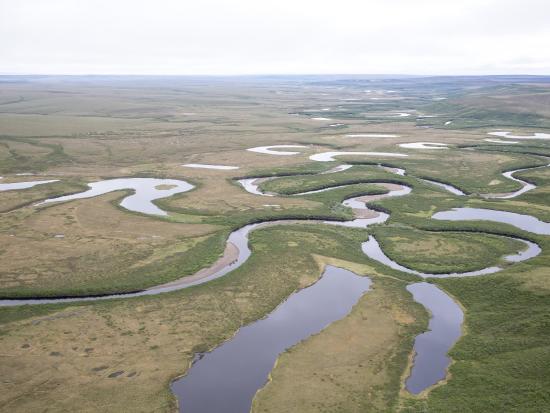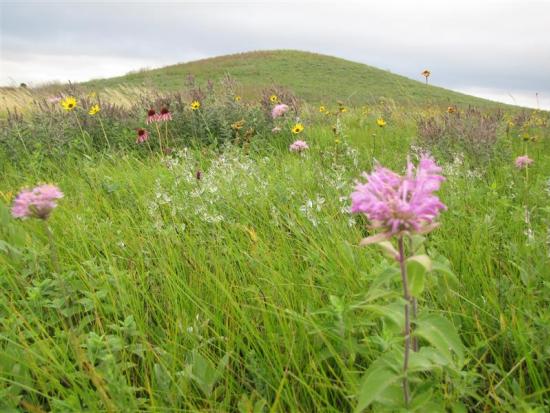Secretary Jewell Applauds President Obama’s Action to Establish Waco Mammoth National Monument in Texas
You are viewing ARCHIVED content published online before January 20, 2025. Please note that this content is NOT UPDATED, and links may not work. Additionally, any previously issued diversity, equity, inclusion or gender-related guidance on this webpage should be considered rescinded. For current information, visit https://www.doi.gov/news/newsroom
New National Park Unit to Showcase Rare Mammoth Fossils, Includes First and Only Recorded Discovery of a Nursery Herd
WASHINGTON – U.S. Secretary of the Interior Sally Jewell welcomed President Obama’s designation of the Waco Mammoth Site as one of the nation’s newest national monuments, permanently protecting the site where the extremely well-preserved fossils of a herd of Columbian Mammoths and other Ice Age animals have been found.
The Waco Mammoth National Monument is one of three new national monuments announced by President Obama today that help tell the story of significant events in American history and protect unique natural resources for the benefit of all Americans.
The area in Texas provides a rare chance to understand and interpret the behavior and ecology of the extinct Columbian Mammoth. The oldest fossils identified at the site are thought to be more than 65,000 years old. In addition, both the excavation area and the land around it offer an excellent opportunity for further exploration and paleontological and geological research.
“Our National Parks inspire and teach us about our nation’s natural history – in this case, about the prehistoric animals that walked our Earth tens of thousands of years ago,” Jewell said. “The Waco Mammoth National Monument will share the wonder of these incredible mammoths with visitors from around the world and help introduce a new generation to the thrill of scientific discovery that only a special site like this can demonstrate first-hand.”
“Today is a special day for Texas! President Bush and I are thrilled that the Waco Mammoth Site is America's newest national monument. I applaud President Obama, the City of Waco, Baylor University, and now the National Park Service, who worked to develop, preserve, and champion the Waco Mammoth Site,” said former First Lady Laura Bush. “The Waco Mammoth Site takes visitors back in time nearly 65,000 years, and reminds us of our country's connection to the history of our planet. As we approach the Centennial of the National Park Service in 2016, this is a great time to celebrate our nation's parks.”
The site will be managed by the National Park Service in cooperation with the City of Waco and Baylor University. The National Park Service will conduct a management planning process, working closely with these partners, community residents, and other groups that have devoted themselves to preserving the site for many years.
“The National Park Service is proud to work in partnership with the City of Waco and Baylor University to protect, preserve, and most importantly share the remarkable Waco Mammoth National Monument with the American people and visitors from around the world,” said National Park Service Director Jonathan B. Jarvis. “The Waco Mammoth National Monument will engage students, visitors, and scientists alike with the story of these extinct mammoths. As the National Park Service prepares to celebrate its centennial in 2016, this new addition to our Park Service family will help more Americans develop lifelong relationships with parks as places where they can discover amazing things.”
The site was discovered in 1978, when Waco residents Paul Barron and Eddie Bufkin were looking for arrowheads and fossils along the Bosque River and found a large bone protruding from the earth. Realizing the possible significance of this discovery, Mr. Barron and Mr. Bufkin immediately took the bone to the Strecker Museum at Baylor University where the bone was identified as the upper leg bone of a Columbian Mammoth.
Over the next 20 years, Baylor University oversaw the excavation of the site, where they found the remains of 24 Columbian Mammoths, including both adults and juveniles, as well as a Western Camel, saber-toothed cat, dwarf antelope, American Alligator, and giant tortoise. The Columbian Mammoths are the largest mammoth species – larger than its relative, the Woolly mammoth – and stood 12 to 14 feet tall and weighed seven to eight tons. Their tusks grew as long as 16 feet. Many of the discovered bones, including the remains of four Columbian Mammoths as well as the skeleton of the camel, remain in place, providing visitors an opportunity to view them.
Congress directed the National Park Service to conduct a special resource study of the Waco Mammoth Site, which was completed in 2008. That study confirmed that the Waco Mammoth resources are nationally significant, worthy of permanent preservation and suitable and feasible for inclusion in the national park system. In April 2015, Director Jarvis participated in a public meeting at the Waco Mammoth Site to hear from the community about the potential inclusion of the site in the National Park System. A large crowd participated in the public meeting and voiced strong support for the proposal.
The City of Waco has operated the Waco Mammoth Site as a park since 2009, in partnership with Baylor University and with support from the nonprofit Waco Mammoth Foundation, Inc. The city donated to the United States approximately five acres, which includes the excavation site and the dig shelter, making it possible to establish the monument. Nearly the entire Waco Mammoth Site will be included within the boundary of the National Monument.
The site remains the nation's first and only recorded discovery of a nursery herd, including females and their offspring, of mammoths from the Ice Age, an era defined as 2.5 million to 10,000 years ago. Of the 24 mammoths uncovered to date, at least 18 were part of the nursery herd. As a result of an unknown natural catastrophic event, the entire nursery herd died at the same moment in time, which left the skeletons relatively intact. The site offers a one-of-a-kind opportunity to examine the matriarchal herd structure and behavior of this extinct species. For example, the herd apparently formed a circular defensive position before death, and juvenile mammoth skeletons rest atop the long tusks of adults, suggesting that the adults were trying to save their offspring from the rising waters and sucking mud.
The Antiquities Act was first used by President Theodore Roosevelt in 1906 to designate Devils Tower National Monument in Wyoming. Since then, 16 presidents have used this authority to protect unique natural and historic features in America, such as the Grand Canyon, the Statue of Liberty, and Colorado's Canyons of the Ancients.
With these new designations, President Obama will have used the Antiquities Act to establish or expand 19 national monuments. Altogether, he has protected more than 260 million acres of public lands and waters – more than any other President – as well as preserved sites that help tell the story of significant people or extraordinary events in American history, such as César E. Chávez National Monument in California, Harriet Tubman Underground Railroad National Monument in Maryland, and Charles Young Buffalo Soldiers National Monument in Ohio.
- Press Release
- Press Release
- Press Release




